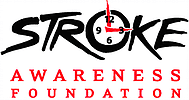 Paramedics reroute ambulance for lifesaving stroke care
Paramedics reroute ambulance for lifesaving stroke care
When a 911 call is received in Santa Clara County, emergency dispatchers follow medically-approved protocols to help them determine the type of emergency response the patient may require. Based on the caller’s answers to specific questions, dispatchers alert emergency responders, including the fire department and ambulance, of a possible stroke patient. Once on scene, paramedics then follow prescribed emergency medical services (EMS) protocols to assess signs of stroke such as, but not limited to, facial droop, arm drift, slurred speech, and time of symptoms onset. The thorough assessment helps the paramedics determine if patients meet the criteria for stroke activation and ambulance transport. All stroke patients that are transported by ambulance in Santa Clara County are taken to a Joint Commission-certified primary stroke center (PSC) or comprehensive stroke center (CSC) for appropriate treatment. This continuum of care was not always automatic.
Prior to 2003 there were no stroke centers in Santa Clara County and EMS policy directed ambulances to transport stroke patients to the nearest hospital for emergency care, regardless of the facility’s experience with treating stroke patients. That began to change when Good Samaritan Hospital became the first hospital in California and 5th in the nation to earn PSC certification. Although other area hospitals soon after began to earn PSC certification, timely treatment of stroke remained an obstacle. One solution to closing the gap between stroke symptoms onset and timely treatment was to connect EMS directly to PSC hospitals.
At the urging of SAF, the Santa Clara County Board of Supervisors unanimously approved groundbreaking legislation in 2008 to institute a redirection policy that mandated EMS to reroute stroke victims to a PSC hospital. In 2017, SAF advocated further for stroke patients and convinced the Board of Supervisors to approve another redirection policy that allows EMS to bypass a PSC and transport directly to the nearest CSC for complex cases. Certified CSCs provide stroke care that involves the most sophisticated and advanced treatments and medical technologies available. These world-class facilities have a neuro-critical care team on staff 24 hours a day, 7 days a week and a dedicated neuro-intensive care unit; use advanced imaging capabilities; and perform complex procedures using progressive medical therapies and surgical techniques, including the clot-busting drug tPA and devices for retrieving blood clots in the brain. Stanford Health Care, Good Samaritan Hospital and Regional Medical Center are certified CSC, while all other hospitals in Santa Clara County are certified PSC.
Keren Dawson-Bowman, 45, of San Jose, is fully-functioning proof that advanced EMS field assessment and redirection saves lives and can also preserve quality of life. In late October 2018, Keren was living her life as normal. She was deeply focused in her role as a high school English teacher and college readiness specialist, and she enjoyed an active and healthy lifestyle with her family. She’d had a seasonal cold, typical of the time of year, and a few lingering headaches that she attributed to the cold. Only an unusual visual disturbance the night of October 27 brought her brief pause; she simply lay down until it subsided.
Shortly after 5am the next day, paramedics were dispatched to Keren’s house with reports of a possible stroke victim. Keren’s husband had called 911 immediately upon recognizing that when his wife woke to use the restroom she was showing signs of stroke, including slurred speech and weakness on one side of her body. After a thorough protocol-based assessment, the paramedics determined not only that Keren met the criteria for stroke activation and ambulance transport, but that her medical emergency required rerouting from the PSC-certified hospital closest to her home to the nearest comprehensive stroke center (CSC). Within minutes, the neuro-critical care team at Good Samaritan Hospital was alerted to Keren’s condition and awaiting her arrival.
Advanced imaging indicated that Keren’s right-side carotid artery was torn. The condition can lead to stroke if a clot forms near the tear restricting or blocking blood flow to the brain. Keren underwent emergency surgery to remove a blood clot and have two carotid artery stents inserted. She recovered in ICU for six days and was released from the hospital with no physical deficits.
Though Keren did not require post-stroke rehabilitation therapies, she notes that multi-tasking, hypersensitivity to noise, and using the computer have presented manageable challenges. “My brain is figuring it out,” she says. Reading on paper, learning to play the guitar, and getting plenty of rest have been important tools in helping her to desensitize sensory input overload. She also credits staying involved with her students as being emotionally important to her post-stroke journey.
Keren’s experience with stroke is a crucial reminder of the importance of FAST action and getting to the proper stroke center for the proper treatment. Santa Clara County stroke patient data show that less than 50 percent of stroke patients get to a stroke center in time for treatment. Across the country, there has been a 44 percent increase in the number of young Americans hospitalized due to stroke in the past decade. Many young stroke survivors are between the ages of 18-65 and frequently experience debilitating disabilities and a lifetime of significant financial burden as a result of delayed or no treatment for stroke symptoms.
Know the signs of stroke and call 911 immediately. EMS is a critical link to timely and case-appropriate treatment for stroke. Time is brain.

 Paramedics reroute ambulance for lifesaving stroke care
Paramedics reroute ambulance for lifesaving stroke care

